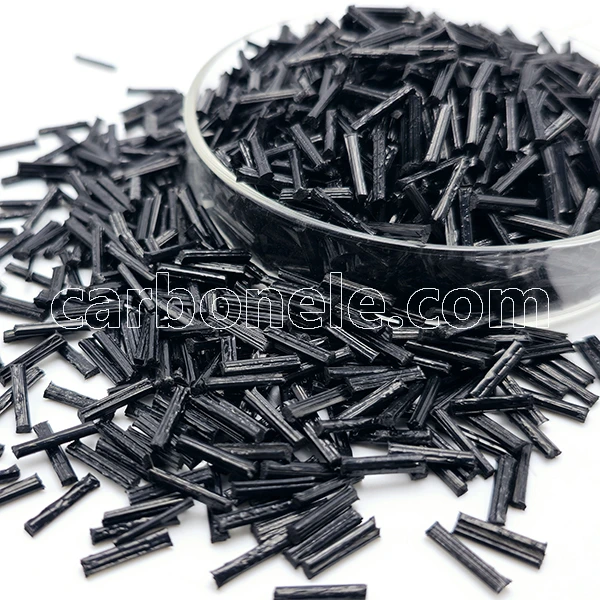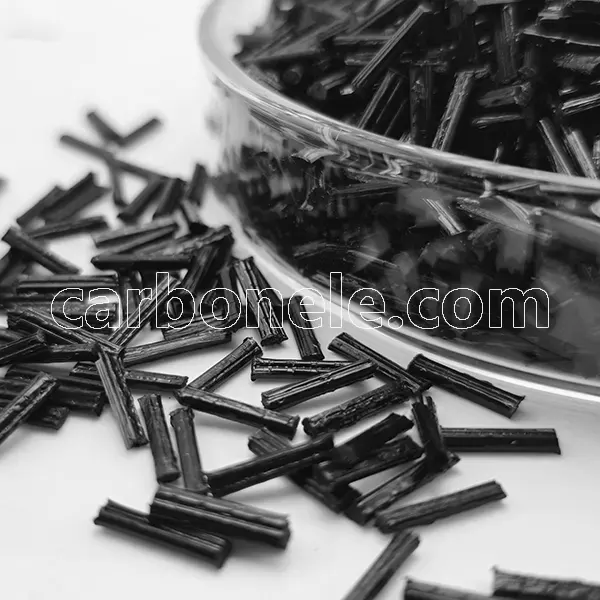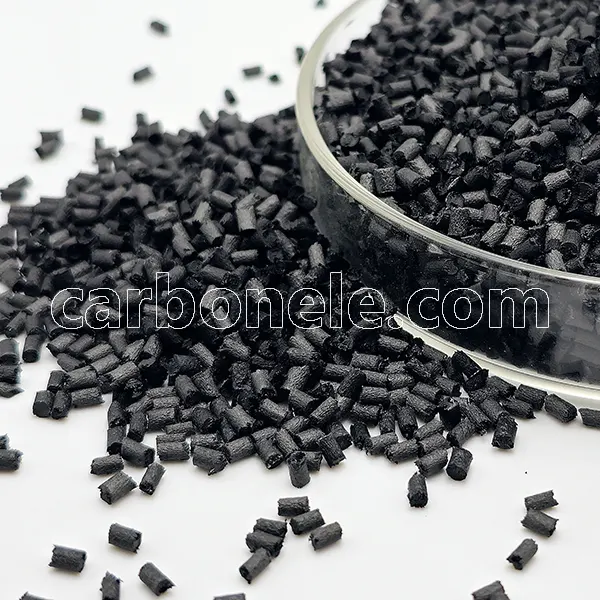Effect Of Carbon Fiber Content On The Mechanical Properties Of CFRTP - Carbon Fiber Compounds Manufacturer | Supplier
Carbon fiber-reinforced thermoplastics (CFRTPs) are widely used in lightweight applications due to their superior strength-to-weight ratio. This study investigates the effect of carbon fiber content (5–60 wt%) on the mechanical properties of polyamide 66 (PA66)-based composites. Tensile strength, modulus, impact toughness, and other key properties are analyzed to understand how fiber loading influences performance, providing insights for material design and engineering applications.
1. Tensile Strength
-
Low fiber content (5%-20%): Significant improvement in tensile strength. CF acts as a rigid reinforcement, effectively bearing load, with optimized fiber-matrix interface bonding (requiring coupling agents).
-
High fiber content (>30%): Strength increase slows or declines due to fiber agglomeration, stress concentration, increased interfacial defects, and reduced matrix load-bearing capacity.
-
Peak performance: Maximum strength typically occurs at 30%-40%, depending on fiber length, orientation, and interfacial treatment.
2. Tensile Modulus
-
Continuous increase: Modulus rises nearly linearly with fiber content, following the Rule of Mixtures. CF’s high modulus (200-400 GPa) dramatically enhances composite stiffness.
-
At 60%: Modulus reaches 3-5 times that of pure PA66 (PA66: 2-3 GPa; CF/PA66: 10-15 GPa).
3. Impact Toughness (Notched Impact Strength)
-
Low content (<15%): Slight improvement via fiber bridging and pull-out energy dissipation.
-
High content (>30%): Toughness declines as excessive fibers increase interfacial failure risks, embrittling the material. PA66’s inherent ductility is compromised.
4. Flexural Strength and Modulus
-
Similar to tensile behavior: Flexural strength initially rises then plateaus; modulus increases steadily. Fiber agglomeration at high content promotes interlaminar shear failure.
5. Elongation at Break
-
Sharp decrease: CF restricts matrix plastic deformation, shifting the material from ductile (PA66: >50% elongation) to brittle (<5%).
6. Creep and Fatigue Resistance
-
Notable enhancement: Fibers inhibit molecular chain slippage (reducing creep) and delay crack propagation during fatigue cycles, extending service life.
Critical Influencing Factors
-
Fiber dispersion/orientation: High content causes agglomeration; injection-molded parts exhibit anisotropic fiber alignment.
-
Interfacial bonding: Coupling agents (e.g., silane) improve interface strength, but excessive fibers exacerbate defect-dominated failure.
-
Processability: Melt viscosity increases sharply above 40%, complicating injection molding and raising porosity risks.
Representative Data Range (Example)
| CF Content | Tensile Strength (MPa) | Tensile Modulus (GPa) | Impact Strength (kJ/m²) |
|---|---|---|---|
| 0% (Neat PA66) | 70-80 | 2-3 | 5-10 |
| 20% | 120-150 | 6-8 | 8-12 |
| 40% | 150-180 | 10-12 | 6-9 |
| 60% | 130-160* | 12-15 | 4-6 |
| (Potential decline observed)* |
Application Guidelines
-
High strength/stiffness: Optimize at 30%-50% CF for balanced performance.
-
Toughness-critical uses: Limit CF to ≤20%, or consider hybrid/long-fiber reinforcement.
-
Extreme loading (>50%): Process optimization (e.g., twin-screw dispersion, compression molding) is essential to minimize defects.
Tailoring CF content and interfacial modification enables targeted optimization of CF/PA66 composites for specific mechanical requirements.
Previous News
Carbon (Xiamen) New Material to Attend ChinaPla...Next News
Short vs. Long Carbon Fiber in Thermoplastics: ...
Feature Product
-
PA12 LCF30 for Drone Fuselages & Wings
What do you know about PA12 LCF30? PA12 ...
-
Competitive Price PA6 LCF30 Composites
What’s it? PA6 LCF30, which stands...
-
ABS CF10 Compound ABS 10%CF Thermoplastic Compo...
What’s ABS CF10? ABS CF10 refers t...








